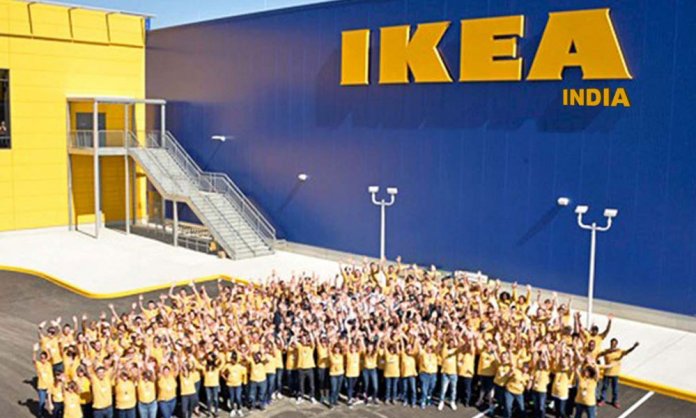Ikea’s boss promised Wednesday to meet the “needs, frustrations and dreams” of local consumers with the Swedish firm’s first Indian store, its second attempt to break into a vast but difficult market.
“We bring an inspiring, affordable and convenient home furnishing offer,” Jesper Brodin said a day before the grand opening of the furniture giant’s vast store on the outskirts of the southern city of Hyderabad.
“We promise to give great quality at affordable prices and try to expand quickly and reach other parts of the country with multiple stores,” Brodin told a news conference.
Ikea, whose founder Ingvar Kamprad died in January, is present in 49 countries. But its previous attempt in 2006 at reaching India’s burgeoning middle class fell foul of local regulations.
This time around, Ikea expects to attract seven million visitors per year to its 13-acre (5.3 hectare) Hyderabad site, the first of 25 outlets it hopes to open across the country of 1.25 billion by 2025.
But Brodin admitted having to give Ikea’s business model a local twist of Indian spice to try to attract a vast middle class not used to a company which expects them to assemble products themselves.
The differences between Hyderabad and the furniture giant’s 400-odd outlets elsewhere start in the 1,000-seater restaurant, its biggest worldwide and according to Ikea “possibly India’s largest”.
Instead of beef or pork, the company’s signature meatballs — almost as famous as its “Billy” bookshelves — will be either chicken or vegetarian. Local favourite biryani is also on the menu for 99 rupees ($1.44).
A plate of eight vegetarian meatballs will cost 129 rupees.
– Coconut mattresses –
“We have changed quite a lot for India. We have two ranges. One is the Swedish unique range and one is the local range,” Ikea food manager Henrik Osterstrom told AFP.
“Food is part of the total experience. It’s a big store and you need to have some energy boost halfway through. So we have sold everything here at different parts of the day,” Osterstrom added.
Alongside standard Ikea furniture, on offer are “locally relevant products” such as masala boxes, Indian frying pans called tawas, rice cake makers and mattresses with a coconut-fibre centre.
There are also more than 1,000 products under 200 rupees to satisfy consumers whom John Achillea, Ikea Hyderabad store manager, says have “big aspirations for their homes and small wallets”.
A major hurdle for Ikea’s DIY model, successful elsewhere, is abundant cheap labour and ubiquitous family-run shops whose staff visit customers’ homes and assemble furniture.
Ikea has therefore teamed up with UrbanClap, an online platform that helps connect handymen with consumers, and the firm also met 1,000 families to try to understand their needs.
The Swedish company is investing $1.5 billion in India as it bets big on luring a rising middle class away from local furniture makers.
After Hyderabad, Ikea plans to open outlets in the financial capital Mumbai next year, followed by stores in Bangalore and New Delhi as it seeks to grab a share of India’s estimated $40 billion home goods market.
But analysts warn that profits won’t come quickly or easily.
“Ikea will have to focus on staff training, the right mix of branding and reaching out to more customers in smaller cities and towns. Profitability will take time,” Satish Meena, of research firm Forrester, told AFP.







































